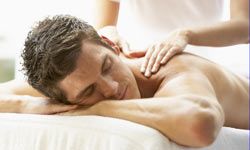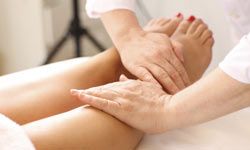Say you've had a rough week at the office, and you're yearning to treat yourself to some much deserved rest and relaxation. You've been feeling tense, so you decide that the perfect way to unwind is to indulge yourself with a massage. Even though you might think that is just a good way to kick back, massage actually comes with a ton of medically proven health benefits, one of which is improved circulation in your cardiovascular and lymphatic systems. When you get a massage, your circulation is improved due to physical manipulation of soft tissue and chemicals released as a part of your body's response to relaxation.
To understand the benefits of massage, you first have to know a little about your circulatory system. Your circulatory system consists of two parts: the cardiovascular and lymphatic systems. These two systems work together to detoxify the body. As nutrient-rich blood travels away from your heart through capillaries, in adjacent tissue cells, nutrients and wastes are exchanged. Fluid taken from the blood, or lymph, transports waste to your lymph nodes where they filter wastes and return fluid to your bloodstream. When your circulatory systems isn't working properly, your blood flow is impaired and your heart has to work extra hard to pump blood. This can cause health problems such as heart attack, stroke, eye disease, kidney disease, muscle pain, dementia, diabetes, influenza and cirrhosis, just to name a few.
Advertisement
Massage stimulates the flow of blood and lymph vessels, thus enhancing circulation. Think of a tube of toothpaste: when you apply pressure to the tube, toothpaste flows out of the tube more easily. The same principle applies to your blood and lymph flow when you get a massage. On the next few pages, we'll take a look at five types of massage that improve circulation.

